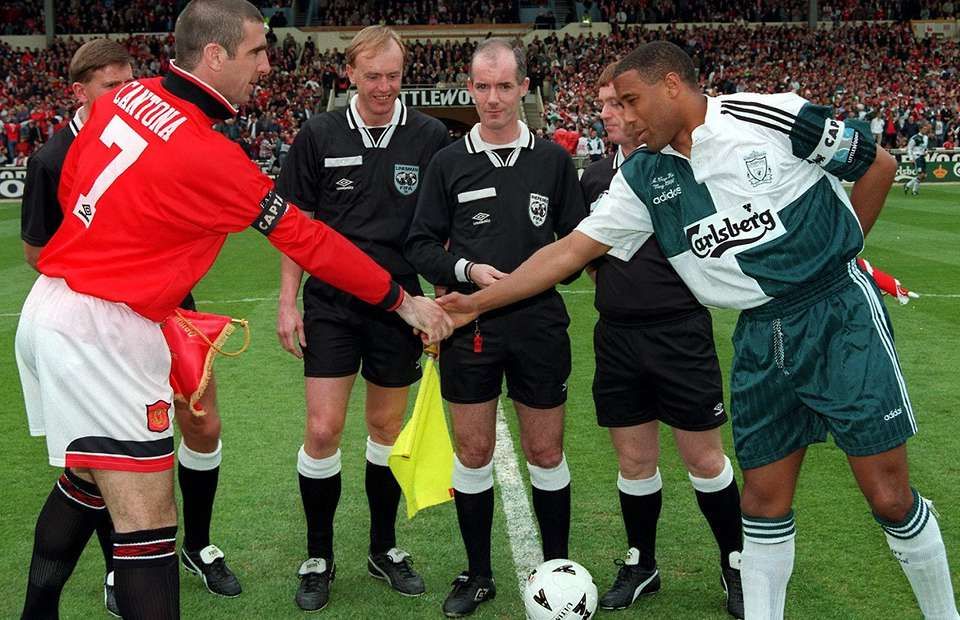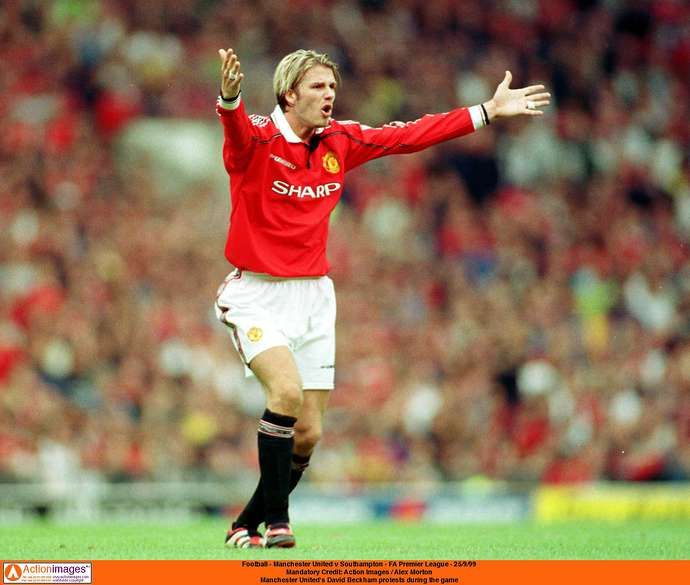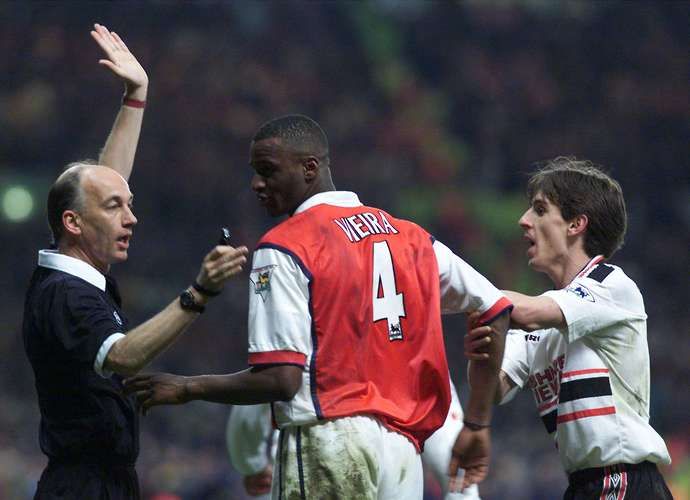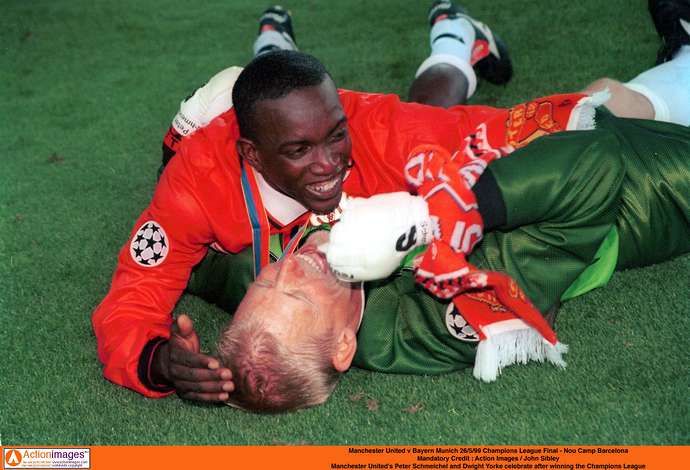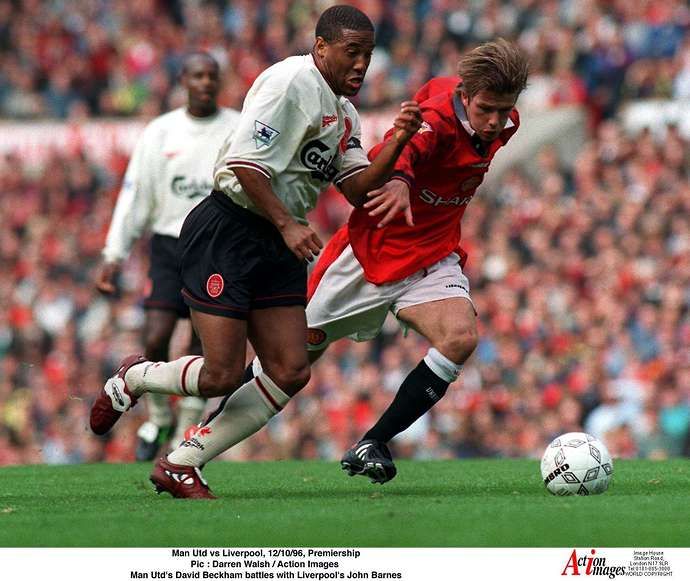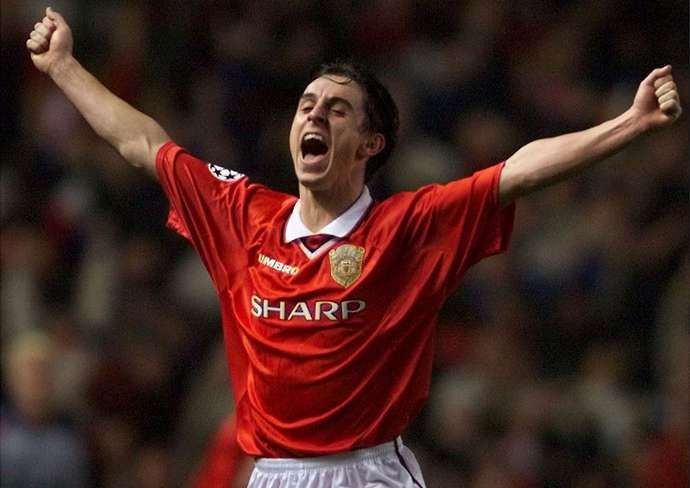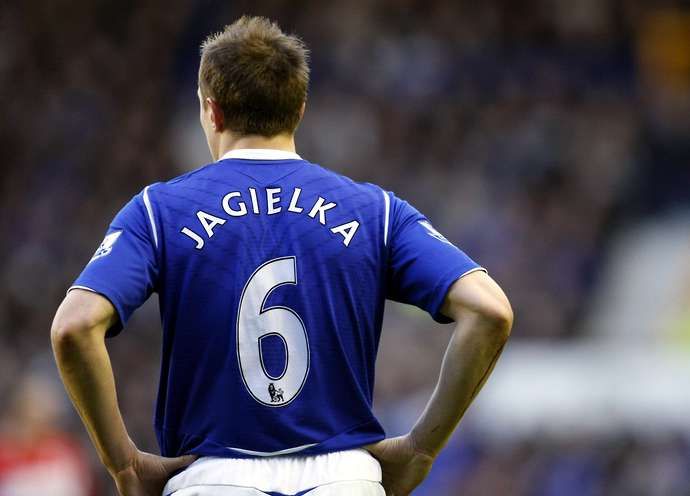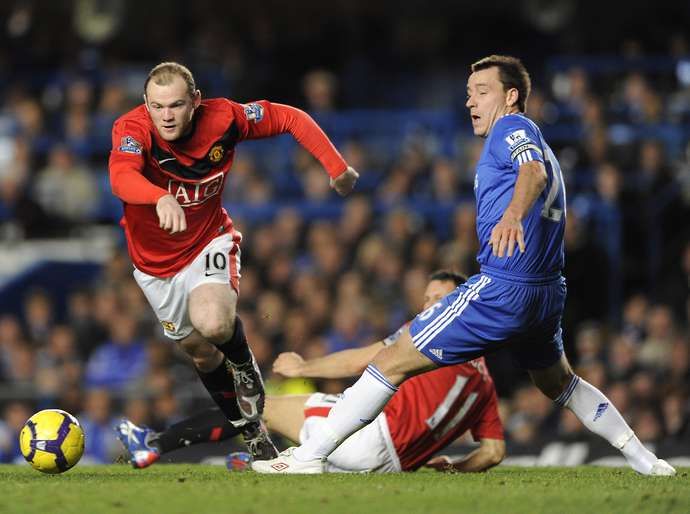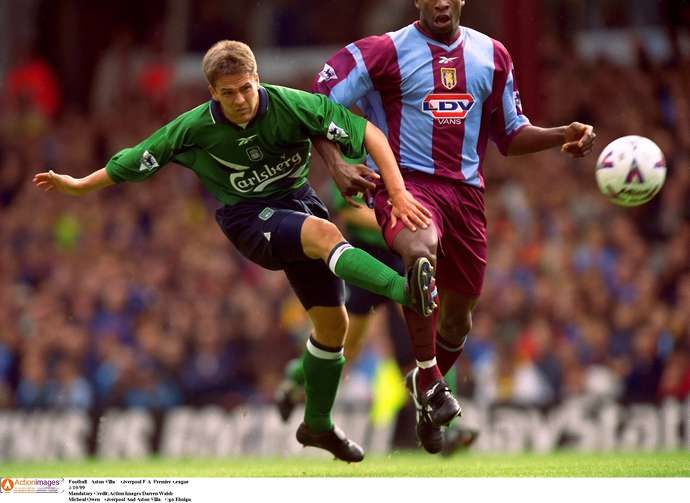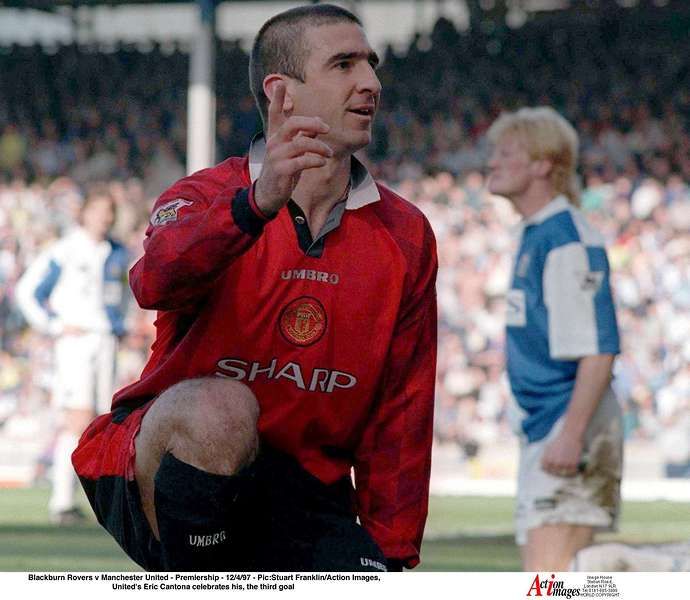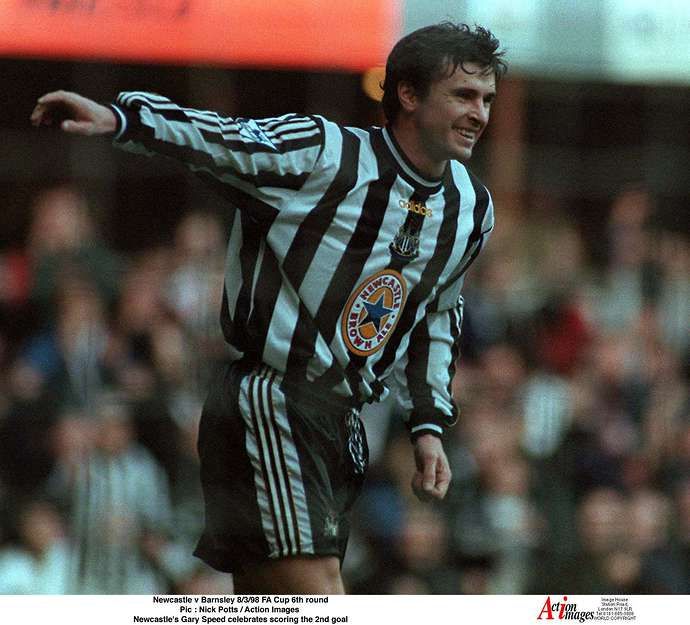The tactical side of the beautiful game is forever evolving, but over the last few years it feels as though the Premier League has undergone something of a revolution.
Whether it’s Antonio Conte’s use of 3-4-3 or Pep Guardiola raising the bar of what we expect from top teams when they have the ball, the Premier League is very much a different animal to the one that saw Leicester City counter-attack their way to the title in 2015/16.
And with those changes - not to mention the much slower developing trends - the demands of virtually every position on the pitch have significantly changed since the Premier League’s inception in 1992.
With that in mind, we look back at 10 Premier League icons who don’t quite fit their traditional positions anymore, and consider where they’d be played instead if they were breaking through now…
David Beckham - Right-back
It’s often said that Trent Alexander-Arnold’s game contains traces of David Beckham and while such a lofty comparison is testament to the Liverpool defender’s world-class deliveries, it also highlights how the game has changed since Golden Balls was whipping them in at Old Trafford.
Nowadays, wingers or wide midfielders like Beckham are far more interested in cutting inside or taking up narrow positions to try and find goals themselves - crossing is predominantly left to the overlapping full-backs, and that’s where Beckham’s wicked right foot would come into play.
Sure, Beckham never boasted the penetrative pace seen from the likes of Kyle Walker or Hector Bellerin, but full-backs provide the box-to-box dynamism in most modern teams and as well as being a serial provider, Beckham had one of the best engines in the business.
Patrick Vieira - Centre-back
Measuring in at 6 foot 4, tenacious in the tackle and dominant in the air, Vieira always had the physical attributes to play at centre-half. Of course, his gracefulness on the ball and unrelenting dynamism made him one of the best box-to-box midfielders in Premier League history instead.
But if the Frenchman were to emerge on the scene today, it’s likely that lung-bursting impact going forward would be overlooked for what Vieira would offer in defence - athleticism, aggression and crucially, the ability to bring the ball out of the back and drive into midfield.
Dwight Yorke - Wide forward
Yorke was part of perhaps the most iconic strike combination in Premier League history as the Trinidadian and Andy Cole fired Manchester United to domestic and European glory. But with two-man frontlines very much a thing of the past, it’s unlikely Cole and Yorke would find themselves lining up centrally in the modern game - instead being asked to score goals from out wide.
From the ten top scorers in the Premier League last season, five of them spent the majority of the 2019/20 campaign on the wing, and through players like Cristiano Ronaldo and Lionel Messi, there is a greater emphasis on wide attackers to provide goals than ever before.
Yorke was a well-rounded footballer and showed many of the hallmarks of a modern winger. He combined fantastic athleticism with the ability to both score and create goals through flashes of sheer ingenuity, but he was also so hardworking that his later career saw a mini-revival as a tough-tackling central midfielder.
Those attributes make him a prime candidate to press from the front, scare teams on the counter and cause damage in little pockets of space, akin to Liverpool’s Saido Mane.
John Barnes - Firmino-esque False 9
The Anfield icon was oft regarded as a player before his time and when looking at the likes of Ronaldo especially, it’s certainly true that modern wide men are of the Barnes mould. But perhaps Barnes would be destined for a different role in the modern game, echoing that of a current Liverpool star in Roberto Firmino.
Barnes’ technical and creative qualities were so impressive that his later years saw him become a deeper midfield playmaker, while he possessed the trickery and balance to grace his way past virtually any defender in front of him during his peak years.
So add Barnes’ robust upper body to the mix and what have you got? A player not dissimilar to Firmino, who can drop into midfield to bring the wide attackers into play, or when opportunities allow find the back of the net himself.
Gary Neville - Wide centre-back
Sorry Gary. You’re a Premier League legend, a great defender and a phenomenal pundit, but you simply wouldn’t get a look-in at full-back today. Neville’s aggression and reading of the game were never in doubt but he always lacked the energy of a modern full-back and his quality on the ball could be described as uninspiring at best - even by the standards of his heyday.
But with the direction the game is heading in, Neville’s 5 foot 11 frame might just be enough to get away with playing at centre-half in a few years’ time, especially in a back three. Height feels like an increasingly less fundamental element for the centre-back position and with three-man defences still very much part of the playbook for top managers, Neville might find some joy as one of the wide centre-halves.
Phil Jagielka - Goalkeeper
Pep Guardiola has been a key driving force behind the changing expectations of goalkeepers in the modern game, now asked to act as an eleventh outfielder and often charged with essentially playmaking from the edge of their own box, and that trend has filtered throughout the Premier League.
Of course, it’s difficult to predict which Premier League icons could provide the necessary level of shot-stopping ability as well, but Phil Jagielka is one of the standout candidates.
During his Sheffield United days, Neil Warnock was so convinced of Jagielka’s competence between the sticks that he essentially doubled up as the Blades’ second goalkeeper.
Warnock often elected to not include a goalkeeper on his bench in favour of having five outfield substitutes and relying on Jagielka to take up the gloves if disaster struck - this actually happened on four occasions, with the central defender making a memorable finger-tip save to deny Robin van Persie.
Handy enough with his feet as well, Jagielka might be one of the few Premier League icons capable of succeeding a sweeper keeper.
Wayne Rooney - No. 8
Wazza has often flirted with central midfield throughout his career, particularly during his final few seasons at Manchester United.
It was a shift in role that naturally divided opinion but considering how perceptions of central midfielders have changed so much in recent years, particularly Guardiola’s lust for two roaming and incredibly technical No.8s, placing Rooney there perhaps makes more sense than ever before.
While the former England captain boasts a fantastic scoring record, he only actually exceeded 20 goals during two Premier League seasons, so the trade-off for playing him a little deeper with the freedom to roam around the midfield in Kevin De Bruyne style is surely a worthwhile one.
Michael Owen - Winger
The Boy Wonder was arguably the best striker in the world during the peak of his powers, but having almost exclusively operated as part of a strike partnership - usually in the little-and-large format - would he get the same opportunities to lead the line today?
It’s more likely Owen would find himself drifting in from the left flank, where his incredible acceleration, dribbling ability and finishing would allow him to ghost in behind defences before slotting past the goalkeeper.
Owen was never really one for setting up his team-mates, tracking back or muscling his way past opponents on the byline, but his proficiency in front of goal would make him a feared wideman nonetheless.
Eric Cantona - Deep-lying playmaker
King Eric may have lacked the natural stamina to operate as a box-to-box midfielder in the days of 4-4-2, but famed for his knack of dropping into midfield to orchestrate play, as well as his natural power and aggression, Cantona possessed many of the pre-requisites to succeed in the deep-lying playmaker role we often see today.
There’s no question he’s got the technical ability to mirror the passing range of the likes of Xabi Alonso, Marco Veratti and Andrea Pirlo, and for all of his extravagance and eccentricity, he was also a hardworking player, never afraid to put his foot in.
The big question is, of course, whether modern managers would want Cantona’s creativity further up the pitch. But during an age where Big Six sides face deeply entrenched low blocks on a weekly basis in the Premier League, he could have just as big an impact from deeper pockets.
Gary Speed - Left wing-back
Having featured in practically every position throughout his career and maintained his fitness so impeccably that he played until 39, the wing-back role which has become a position of such significance since Antonio Conte’s 3-4-3 system inspired Chelsea to the title is almost tailor-made for the late, great Gary Speed.
Speed had a knack of impacting at both ends of the pitch, while his influence in between wasn’t half bad either, and in addition to his creative qualities was revered for popping up with goals, somewhat similar to what Marcos Alonso provided the Blues with during the 2016/17 season.
Having finished his career as a full-back, the modern wing-back position essentially combines the many different qualities the Welshman showed throughout his 17 years in the Premier League.




















